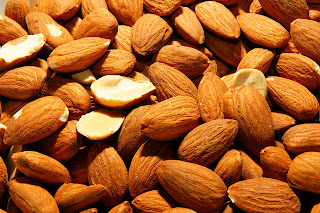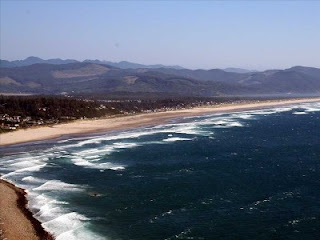Camera Raw is an image containing unprocessed, or undeveloped, data.
We will be using camera raw because we will be getting high quality images and full color spectrum images.
Camera Raw allows a photographer to:
-have a photo that's not compressed
-loss no data when using Raw
-have a full range of colors
-Have a program to use
Wednesday, September 26, 2012
Friday, September 14, 2012
File types
*Raw-
-No compression, 15mb = 15mb
-lossless (loss no data when using Raw)
-Full range of colors
-look a little flat
-program to use
-slower (much slower!!)
*jpeg-
-compressed, 15mb= 5-6mb *****
-not lossless, lost data *****
-partial range of colors
-look normal to your eyes
-open with any program
- a lot faster !!
*.Tiff-
-compressed file, 15mb= 9-10mb
- not lossless ----> after editing, it is then lossless
everything else, same as jpeg
*Bmp
*png
*.gif-
-multiple images
-very compressed !
-16-24 images- movie format
-No compression, 15mb = 15mb
-lossless (loss no data when using Raw)
-Full range of colors
-look a little flat
-program to use
-slower (much slower!!)
*jpeg-
-compressed, 15mb= 5-6mb *****
-not lossless, lost data *****
-partial range of colors
-look normal to your eyes
-open with any program
- a lot faster !!
*.Tiff-
-compressed file, 15mb= 9-10mb
- not lossless ----> after editing, it is then lossless
everything else, same as jpeg
*Bmp
*png
*.gif-
-multiple images
-very compressed !
-16-24 images- movie format
Wednesday, September 12, 2012
Rules of photography (un-edited)
Monday, September 10, 2012
Rules of photography (beach photos)
Tuesday, September 4, 2012
Aperature, Shutter speed, ISO -Review
 |
| Bigger Aperture |
 |
| Smaller Aperture |
1. What part of the body should we closely relate aperture?
Our eyes act closely to aperture
2. Finish this sentence - the smaller the Aperture the bigger the F spot, the higher the Aperture the smaller the F spot.
3. In your own words tell me how aperture impacts Depth of Field?
The aperture changes the amount of blur there is in the picture
4. With the camera near you - tell me ALL of the F stops available on the lens currently attached.
F4.5, F5.0, F5.6, F6.3, F7.1, F8.0, F9.0, F10, F11, F13, F14, F16, F18, F20, F22, F25, F29,
 |
| High shutter speed |
 | |||||||
| Slow shutter speed |
1.
If you were assigned to shoot at Blue and Gold night, which will be
next month, what shutter speeds do you think you would have to shoot at
the following events that night I would like you to answer the question
for the following two situations:
At the beginning while the sun is still partially up and the courtyard has reasonable light
a.) the dunking booth, fast shutter speed
b.) the food eating contest, fast shutter speed
c.) the rock climbing wall, slow shutter speed
d.) someone working at a booth, slow shutter speed
e.) the DJ/MC working at the middle of the circle, fast shutter speed
f.) the Diamonds performance., fast shutter speed
Towards the end when there is no sun and has gotten dark enough that you can't see from one end of the courtyard to the other.
a.) the dunking booth, Long shutter speed
b.) the food eating contest, Long shutter speed
c.) the rock climbing wall, slow shutter speed
d.) someone working at a booth, long shutter speed
e.) the DJ/MC working at the middle of the circle, long shutter speed
f.) the Diamonds performance., long shutter speed
2.
List the three settings your camera has regarding setting shutter speed
(these are found at #5 on the Shutter Speed website. Explain how each
works - DO NOT COPY AND PASTE, use your own words.
Fast shutter speed is used for when you want a still picture and there's a lot of fast movement, Slow shutter is use for when there's not a lot of movement, And Fast shutter speed is used when there is no light and you cant see anything.
3.
With the camera near you, what are the shutter speeds available to you
on that camera? You will have to turn the camera on to determine this -
hopefully you can figure out what setting to put the camera on to
determine the answer to this question.
30", 25", 20", 15", 13", 10", 8", 6", 5", 4", 3"2, 2"5, 2", 1"6, 1"3,
1', 0"8, 0"6, 0"5, 0"4, 0"3, 1/4, 1/5, 1/6, 1/8, 1/10, 1/13, 1/15, 1/20,
1/25, 1/30, 1/40, 1/50, 1/60, 1/80, 1/100, 1/125, 1/160, 1/200, 1/250,
1/320, 1/400, 1/500, 1,640, 1/800, 1/1000, 1/1250, 1/1600, 1/2000,
1/2500, 1/3200, 1/4000,
 |
| ISO 6400 |
Sunny 16 rule
The sunny 16 rule method was used before they came out with a light meter. The basic rule for sunny 16 is, On a sunny day you have to set the aperture to f/16 and the shutter speed to the ISO setting for a subject in direct sunlight.
The sunny 16 rule to me, means I'm glad we now have a light meter because its a lot of work to set all of the setting the specific way you have to set it. So with the light meter we just pick up the camera and go. (:
The sunny 16 rule to me, means I'm glad we now have a light meter because its a lot of work to set all of the setting the specific way you have to set it. So with the light meter we just pick up the camera and go. (:
Subscribe to:
Comments (Atom)




















